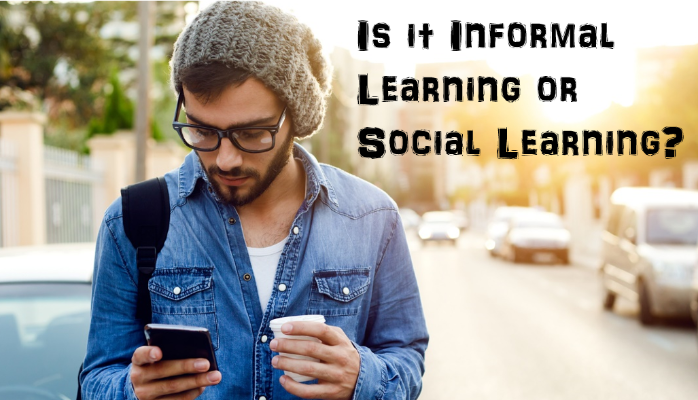Informal learning! Social learning! These are all terms we often hear used interchangeably. Yet each is a different form of developmental learning and should be understood in context. And to get a glimpse of where we are heading with these trends in engagement, we can look to the marketing industry.
Informal learning
The notional idea is that over 70% of workers learn more from their colleagues than they do from formal training courses in classrooms or online. While Jay Cross, the author of this informal learning movement did not really focus on the technologies needed for informal learning, he called out the importance of communities, networks, and the role of the internet in facilitating this change in how organizations actually learn.
Social learning
The idea of developmental learning through social interactions mostly thought of as through social networking and social media. These include ideas such as using Facebook to deliver courses, or parts of courses and social learning tools such as Twitter, Jive, Teams and Yammer as part of the learning architectures in organizations. And just to confuse matters, the term social collaboration can be considered a subset of social learning whereby participants are learning from each other on their own outside of a course, in informal, unstructured ways (like on Yammer, Teams, Facebook etc.).
How Technology Plays with Both Forms of Developmental Learning
Informal learning is much more than social learning – it’s a mindset, a recognition factor, and something which if done properly can be hugely popular and effective. There is, however, a real reason to realize that if informal learning is going to work, technology will have to be used and used effectively because:
* The modern employee is now adept at social media usage and spends a large amount of time in online environments whether shopping, sharing, communicating, etc.
* There is the rise of the modern untethered worker – working from home or in the freelance economy.
* The modern workplace is becoming virtual not just in its location, but in its composition. Teams are assembled and disassembled to deliver projects and programs. These teams come from in-company, from specialist support providers and from individual contractors.
But providing an environment for learning is not enough, it is the engagement and interaction provided that will bring the learner into the new informal learning environments to share. I think back to my days on Doritos and the Crash the Super bowl contests and other methods of providing extrinsic and intrinsic incentives to change behavior. These tactics to foster motivation have been done, and we have tools we can successfully borrow in L&D.
Also, L&D has a lot to learn in relation to engaging with informal learning. The trends that we’re embracing in L&D communication and engagement thinking fall two decades behind what the marketing industry is doing. The opportunity to learn from marketing and marketing-orientated platforms to engage with learners using digital marketing techniques in social and informal developmental learning is probably the easiest development yet to be fully appreciated. Now is the time for meaningful social interactions driven through social media that produces true behavior change.

